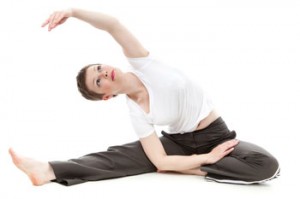 Evaluating the various types of stretching can be difficult. Fortunately I’ve got a list to help you identify the seven best types of stretching to incorporate with your massages.
Evaluating the various types of stretching can be difficult. Fortunately I’ve got a list to help you identify the seven best types of stretching to incorporate with your massages.
Understanding and knowing the difference between each stretching technique we help you decide which will suit your specific needs.
1. Static Stretching
This stretching technique is executed by extending the targeted muscle group to its maximal point and holding for 30 seconds. Static stretching is best done after your workouts.
2. Dynamic Stretching
This type of stretching requires the use of continuous movement patterns that mimic the exercise or sport to be performed. It is good way to warm up for your sport and has shown to improve performance.
3. Active Stretching
This type of stretching involves the muscle actively. Hold the stretched position with the opposing muscle group. This stretch technique is held for only two seconds at a time and repeatedly for several repetitions.
4. Ballistic Stretching
This type of stretching is typically used for athletic drills and utilizes repeated bouncing movement to stretch the targeted muscle group.
5. Myofascial Release
This type of stretch uses a foam roller or similar device to release tension and improves flexibility in the deep tissue and underlying muscle. Back-and-forth movements are performed over an area of 2 to 6 inches for 30 to 60 seconds. Your individual’s pain tolerance will determine the amount of pressure applied to the target area.
6. Proprioceptive Neuromuscular Facilitation (PNF)
This stretch uses receptors to improve the nerves & muscles response in the body. The flexibility gained can be maintained by doing PNF stretches of minimum one repetition for at least 2 times a week. There are different ways to do PNF: Contract relax, Contract-Hold relax and so on. Usually, PNF is performed with the help of a partner but you can do it on your own with a towel for resistance
7. Functional Stretching
This type of stretching is something relatively new to fitness but has proven to be very successful to improve flexibility in their athletes. Athletes mainly use free weights to train coordination, speed and balance are all highly specific to the movement.
Here’s a quick recap of things to remember:
- Static stretching after your work out.
- Dynamic stretching as warm up.
- Remember don’t hold your breath when stretching.
- Stretching should never be painful.
Stretching is best in conjunction with massage therapy. So call or visit us now to make your massage appointment and we can discuss how to incorporate stretching into your life style.



